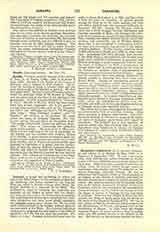

Caramuel y Lobkowitz, JUAN, Spanish ecclesiastic and writer; b. at Madrid, May 23, 1606; d. at Vigevano, September 8, 1682. He was a precocious child, early delving into serious problems in mathematics and even publishing astronomical tables in his tenth year. After receiving a superficial education at college, where his unusual ability brought rapid advancement, this prodigy turned his attention to the Asiatic languages, especially Chinese. He was received into the Cistercian Order at the monastery of La Espina, in the Diocese of Palencia, and after ordination entered upon a singularly varied and brilliant career. His sermons attracted the favorable attention of the Infante Ferdinand, Governor of the Low Countries, while he was attached to the monastery of Dunes in Flanders, and in 1638 he was honored with the degree of Doctor of Theology by the University of Louvain. When he was obliged to leave the Palatinate, the King of Spain made him his envoy to the court of the Emperor Ferdinand III. He was in turn Abbot of Melrose (Scotland), Abbot-Superior of the Benedictines of Vienna, and grand-vicar to the Archbishop of Prague. In 1648, when the Swedes attacked Prague, he armed and led a band of ecclesiastics who did yeoman service in the defense of the city. His bravery on this occasion merited for him a collar of gold from the emperor. Soon after he became Bishop of Konigratz, then Archbishop of Otranto, and at his death was Bishop of Vigevano.
His books are even more numerous than his titles and his varied achievements; for, according to Paquot, he published no less than 262 works on grammar, poetry, oratory, mathematics, astronomy, physics, politics, canon law, logic, metaphysics, theology and asceticism. But he produced little that is of permanent value. He loved to defend novel theories, and in “Theologia moralis ad prima atque clarissima principia reducta” (Louvain, 1643) tried to solve theological problems by mathematical rules. Some of his moral opinions gained for him from St. Alphonsus Liguori the title of “Prince of the Laxists”.
LEO F. O’NEIL

